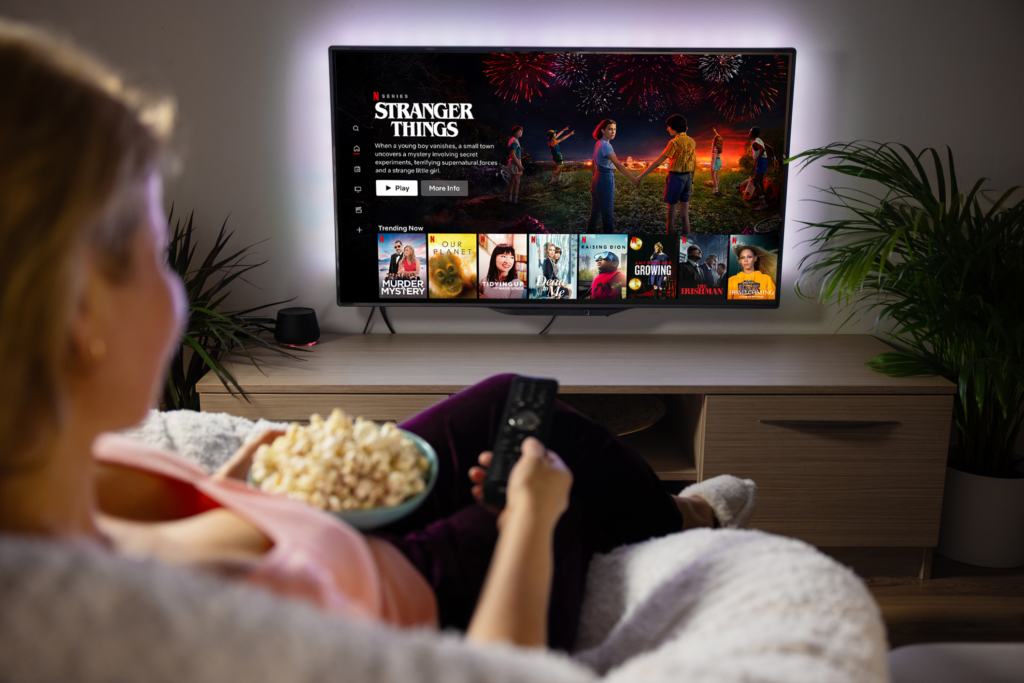Welcome to the era of endless entertainment at our fingertips! With streaming platforms revolutionizing how we consume TV shows, the age-old debate between weekly episode releases and binge-watching has never been hotter. Let’s dive into the pros and cons of each strategy, unraveling the mysteries behind viewer engagement and streaming habits. So grab your popcorn, settle in, and let’s explore the captivating world of TV show release methods!

The traditional model of weekly episode releases
In the world of television and streaming platforms, the traditional model of weekly episode releases has been a long-standing practice. This method involves airing one episode per week, allowing viewers to anticipate and savor each installment.
The weekly release strategy builds suspense and keeps audiences eagerly waiting for the next episode. It creates a sense of excitement as viewers discuss theories, predictions, and cliffhangers between episodes.
Moreover, spacing out episodes allows for time to digest the content and reflect on character development or plot twists. Viewers have an opportunity to engage with the show over an extended period rather than consuming it all at once.
While some may find the wait between episodes frustrating in today’s era of instant gratification, others appreciate the nostalgic charm and communal experience that comes with following a series week by week.
Pros of weekly episode releases
The traditional model of weekly episode releases has its own charm and benefits that captivate viewers in a unique way. One of the key advantages is how it creates anticipation and buzz around each upcoming episode. With a week-long gap between releases, fans have time to discuss theories, predictions, and share their excitement with others.
Another pro of weekly episode releases is the opportunity it provides for viewers to savor each installment. By spacing out the release schedule, audiences can immerse themselves in the storyline without feeling overwhelmed or rushing through content. This format allows for a deeper connection with characters and plot development.
Additionally, releasing episodes on a weekly basis helps maintain viewer engagement over an extended period. Instead of binge-watching an entire season in one sitting, fans are encouraged to return week after week, keeping them invested in the show for longer durations.
A. Builds anticipation and discussion
Are you the type of viewer who loves dissecting every scene, predicting plot twists, and engaging in lively discussions with fellow fans? Weekly episode releases are your best friend!
Each week brings a new installment, leaving you hanging on cliffhangers that spark anticipation for what’s to come. The waiting game builds excitement as you eagerly count down the days until the next episode. It’s like unwrapping a gift every week!
The episodic format also encourages community engagement. From online forums to watercooler chats, everyone is buzzing about the latest developments in their favorite shows. Debating theories and analyzing character arcs become part of the fun when episodes are released weekly.
So if you thrive on anticipation and enjoy diving deep into show analyses with other enthusiasts, then weekly episode releases offer a thrilling viewing experience that keeps you hooked till the very end!
B. Allows for a break in between episodes
One of the advantages of weekly episode releases is that they allow for a break in between episodes. This breather gives viewers time to digest and discuss what happened in the previous episode, creating anticipation for the next one.
Instead of binge-watching an entire season in one sitting, spacing out episodes can build excitement and keep viewers engaged over a longer period. It’s like savoring each bite of a delicious meal rather than devouring it all at once.
Taking breaks between episodes also provides an opportunity to reflect on character development, plot twists, and cliffhangers. It allows viewers to speculate about what might happen next and keeps them invested in the storyline.
Furthermore, having breaks between episodes can enhance the viewing experience by allowing emotional moments or shocking reveals to sink in before moving on to the next installment. This pacing can create a more immersive and memorable watching experience for audiences.
C. Keeps viewers engaged longer
Weekly episode releases have a unique way of keeping viewers engaged longer. By spacing out the episodes, audiences are compelled to tune in week after week, creating a sense of anticipation and excitement for what’s to come next. This strategy not only maintains interest but also allows time for discussions and theories to flourish between episodes.
The cliffhangers at the end of each weekly release leave viewers eagerly waiting for resolutions, sparking conversations online and offline. This engagement extends beyond just watching the show; it becomes a shared experience that brings people together as they speculate on plot twists and character developments.
Moreover, the break between episodes gives viewers time to digest each segment fully before diving into the next one. It builds suspense and keeps them invested in the storyline, enhancing their overall viewing experience. The prolonged engagement with a TV series through weekly releases fosters loyalty among fans who eagerly await each new installment.
Cons of weekly episode releases
For some viewers, the traditional model of weekly episode releases can be a double-edged sword. While it builds anticipation and keeps the excitement alive, it can also lead to frustration for those who prefer instant gratification. Waiting seven days for the next installment can feel like an eternity in today’s fast-paced world.

Furthermore, with social media buzzing about each new episode as soon as it airs, there is a constant risk of stumbling upon spoilers. It becomes a challenge to avoid discussions or online posts that might reveal crucial plot points before you’ve had the chance to watch the latest episode yourself.
Moreover, in a culture where binge-watching has become increasingly popular, some viewers may find themselves losing interest in shows that release episodes on a weekly basis. The ability to consume content at one’s own pace has shifted expectations, making waiting for weekly releases less appealing to certain audiences.
A. Frustrating for impatient viewers
For some viewers, the idea of waiting a whole week for the next episode can feel like an eternity. The suspense and anticipation may be thrilling for some but excruciating for others.
In today’s fast-paced world where instant gratification is the norm, having to wait patiently for new episodes can test even the most patient souls. The impatience to know what happens next can lead to frustration and restlessness.
With binge-watching becoming increasingly popular, the concept of delayed gratification through weekly releases might seem outdated to those who prefer consuming content at their own pace. For these individuals, having all episodes available at once is more appealing.
However, it’s essential to recognize that different viewing styles cater to different audiences. While weekly releases may frustrate impatient viewers, they also have their merits in building suspense and prolonging the enjoyment of a series over time.
B. Risk of spoilers and losing interest
With the rise of social media and online communities, the risk of stumbling upon spoilers is a real concern for those following shows released weekly. The excitement of discussing the latest episode can quickly turn sour if someone accidentally reveals a major plot twist or character development.
This constant fear of having key moments spoiled can lead to viewers feeling anxious and on edge, affecting their overall enjoyment of the viewing experience. Additionally, in today’s fast-paced world, it’s easy to lose interest in a show that doesn’t keep up with our binge-watching habits. Waiting seven days for a new episode may seem like an eternity when we’re used to consuming content at our own pace.
The temptation to seek out spoilers or even abandon a series altogether due to impatience is always lurking in the background. This adds another layer of complexity to the debate between weekly releases and binge-watching, as producers must find ways to keep audiences engaged without risking losing them along the way.
The rise of binge-watching culture
The rise of binge-watching culture has transformed the way we consume television shows. With streaming platforms offering entire seasons at once, viewers can now immerse themselves in a series for hours on end. Gone are the days of waiting anxiously for the next episode to air – now, it’s all about watching as much as you want, whenever you want.
Binge-watching allows viewers to get fully invested in a storyline without interruptions. The ability to watch multiple episodes back-to-back creates an addictive viewing experience that keeps audiences hooked. It’s like diving into a captivating novel and not being able to put it down until you reach the last page.
This shift in viewing habits has led to some interesting social dynamics as well. Friends can now binge-watch together, discussing plot twists and character developments in real-time. Binge-watching parties have become a popular way to bond over shared TV obsessions and dissect every detail of our favorite shows.
Binge-watching has revolutionized how we engage with television content, offering unparalleled convenience and entertainment value for modern audiences.
Pros of binge-watching
Are you a fan of immersing yourself in a TV show for hours on end? If so, binge-watching might be your go-to streaming strategy. One major advantage of binge-watching is the ability to watch an entire season (or multiple seasons) in one sitting. This allows for a deep dive into the storyline without waiting week after week for new episodes.
Another perk is the flexibility it offers. You can tailor your viewing experience to fit your schedule – no need to wait around for specific broadcast times. Binge-watching also eliminates cliffhangers and keeps you engaged in the narrative flow without interruptions.

Moreover, binge-watching can create a sense of accomplishment once you’ve completed a series. It’s like reaching the finish line of an epic storytelling marathon. Plus, let’s not forget how satisfying it is to see all plot twists unravel back-to-back!
Conclusion
In the evolving landscape of streaming platforms, the debate between weekly episode releases and binge-watching continues to shape viewer habits. While traditional weekly releases have their benefits in building anticipation and fostering discussions, binge-watching offers a more immersive and uninterrupted viewing experience.
The choice between these two strategies depends on the goals of the content creators and preferences of viewers. Whether you enjoy savoring each episode over time or diving into a series all at once, both release methods have their own unique appeal. As we continue to consume TV shows in different ways, it’s clear that there is no one-size-fits-all approach when it comes to satisfying our entertainment cravings.
Stay tuned for more updates only on QAWire

